Figs are one of the easiest fruits to grow and are tough to find fresh in stores, so they make a great candidate for planting in your garden. I’m going to go over everything you need to know about planting fig trees, including choosing varieties, when and how to plant, soil amendments and pH, fertilizer, spacing, and more.
History of Figs
Figs were one of the first crops cultivated by people, over 11,000 years ago—that’s at least one thousand years before even barley, wheat and legumes. Like we are talking about the O.G. of human agriculture here!
Figs are so ancient that they figure predominantly in Babylonian mythology, Buddhism, Christianity, Judaism and Islam.
Beyond flavor and general self-sufficiency, I’d recommend planting figs just to get a slice of agricultural and human history!
How Figs Grow
The fig tree, or ficus carica, should not to be confused with the popular houseplant, the fiddle-leaf fig tree, which is in the same ficus plant family.
How Big Do Fig Trees Get?
Figs are small deciduous trees, meaning they lose their leaves every year. Yo, but when I say small trees, that’s relative to the whole realm of trees! Because depending on the variety, when they’re planted in the ground, they can grow between 6-33 feet high— even up to 60 feet in some parts of the world!
Fig Trees In Containers
Figs also make great patio plants since you can grow them in a container and bring them indoors. If you do that the figs will, thankfully, grow to the size of their containers, the same way bonsai works.
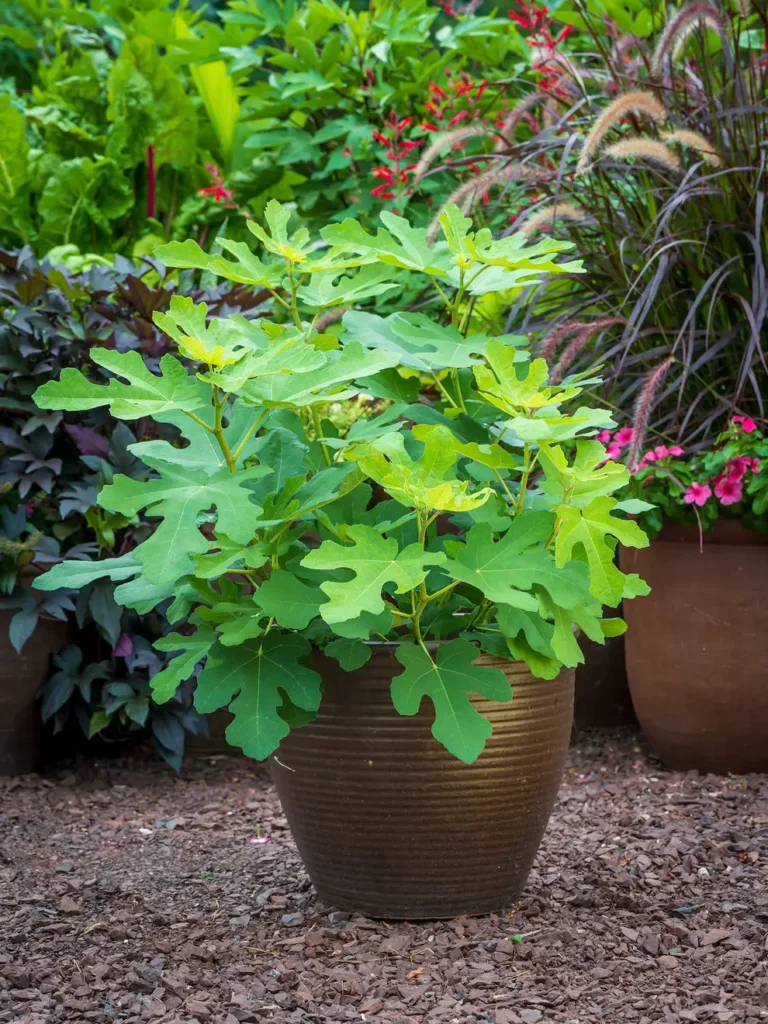
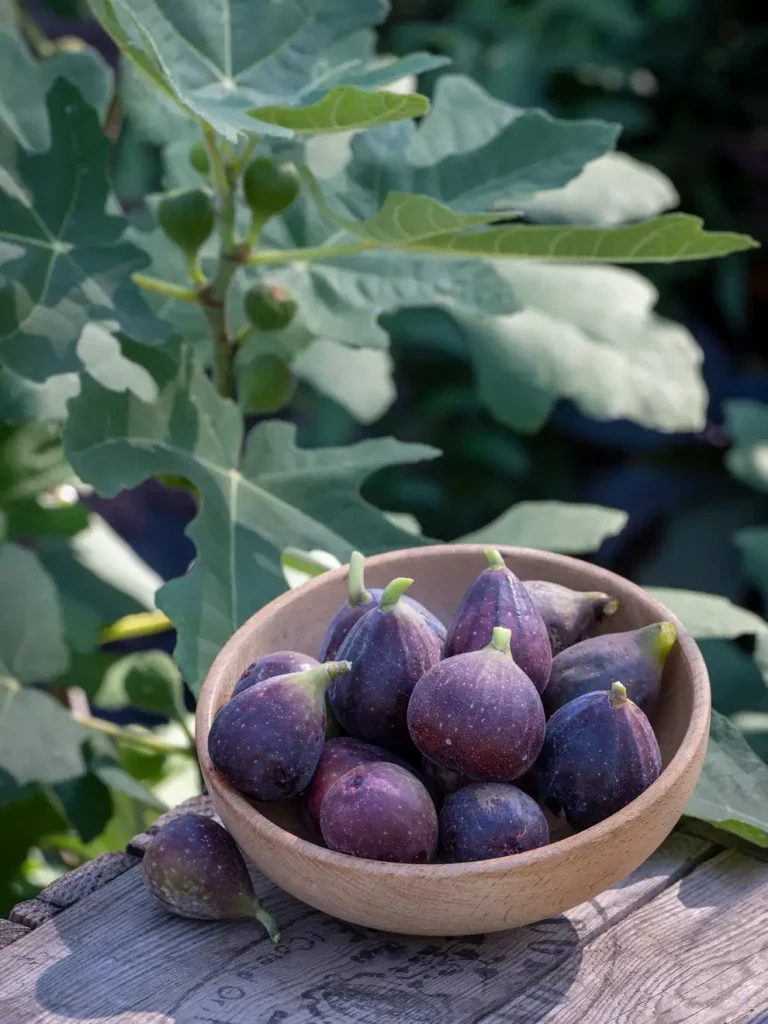
Fig Fruit Colors
Fig fruits start green and depending on their variety, will ripen to black, brown, violet or purple, yellow, or green, which is called white.
Fig Syconium
Turns out that this fig “fruit” is technically not a fruit at all, but a false fruit called a syconium. This fleshy pod has tons of tiny hidden flowers growing inside of it, called inflorescence.
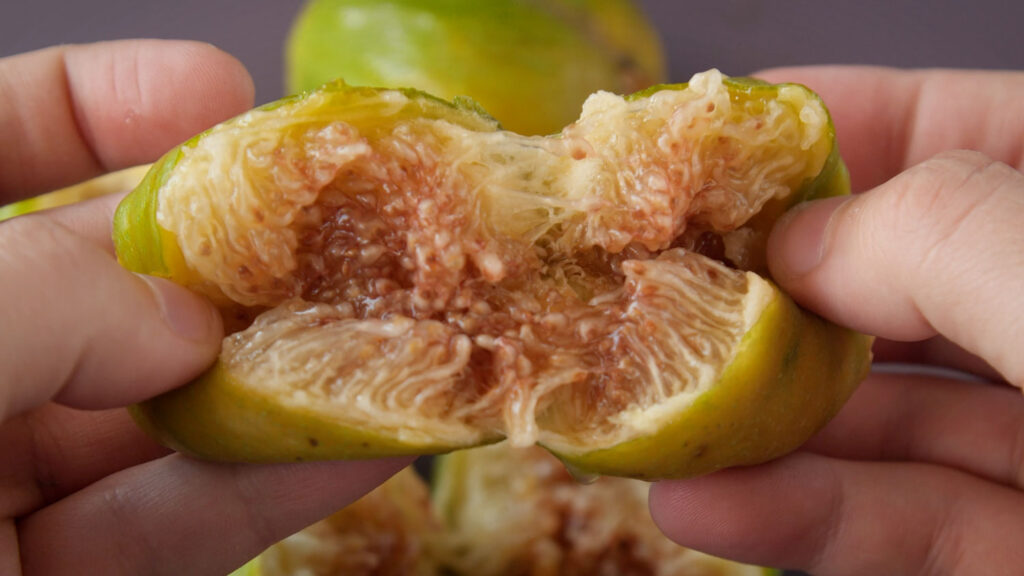
I didn’t know this when I first got a fig, so I was a little concerned when I didn’t see flowers forming like a regular fruit tree. Then, figs just started magically appearing out of nowhere!
When To Harvest Figs
Figs usually have two crops, one in midsummer called “breba” and the main crop at the end of summer and early fall. Different varieties will ripen at different points during these ranges, so check with your nursery.
Fun fact, you can eat the leaves, too!
Where To Get Fig Trees
Fig Cuttings
If you know someone with a fig, you can take a cutting from their tree, and propagate it. This is especiallly common for rare varieties. There’s even a club where I live that is dedicated to this!
Planting Fig Seeds
You can also technically start figs by seed, but they’ll take years to get to the fruit-bearing stage. So, it’s not recommended.
Buying Fig Plants
Buying a new fig tree from a local or online nursery—either bare root, or potted—is usually the best way to go. If you’re looking for a great one, I highly recommend Stark Bro’s, where I purchased both of my figs.
Are Mature Fig Trees For Sale?
You probably won’t be able to find a full grown fig, but don’t worry, they grow super fast. So fast, in fact, that they’re considered invasive in the U.S. states of Florida and California.
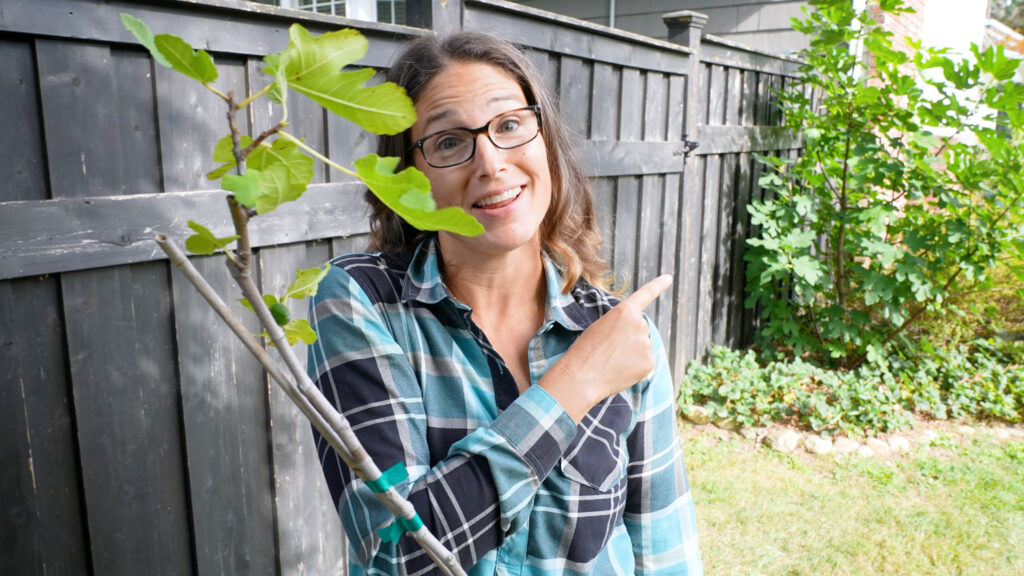
Fig Tree Climate & Zones
Where Are Figs Native To?
While today figs are grown throughout the world, they’re a subtropical plant native to the Mediterranean, and south and west Asia. That means they like warmth!
Fig Tree Planting Zones
If figs endure long periods below 20ºF, their above-ground wood will become permanently damaged. Mature figs that are dormant may be able to go as low as 10ºF without damage. In the U.S., depending on your variety, that means you can plant figs outdoors in zones 5-10.
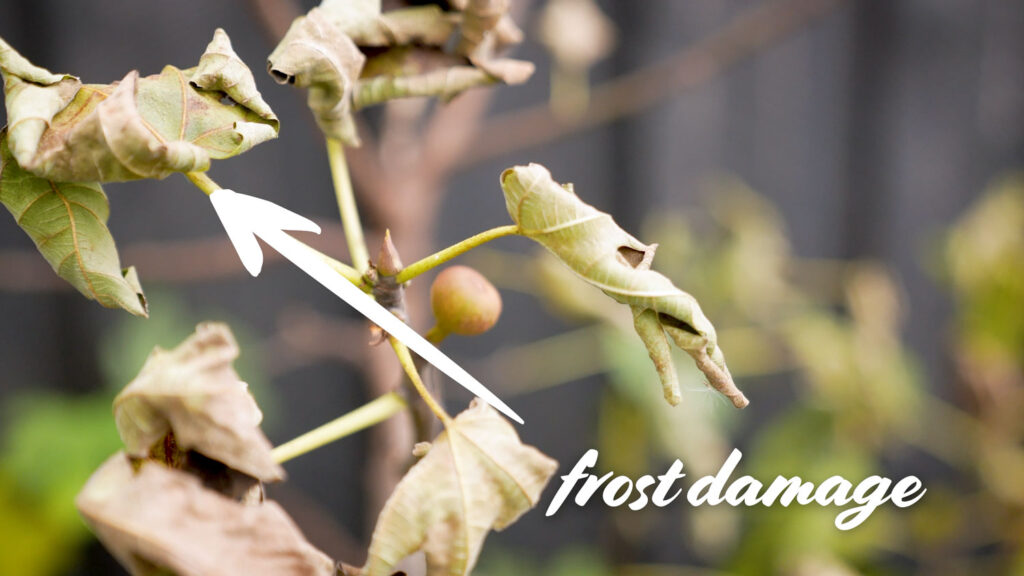
Fig Tree Winter Protection
In zones 5-7, you’ll probably need winter protection of some kind. Wrapping trees in burlap for the season is one of the most popular methods. I’m in zone 7a and I haven’t needed to protect my fig tree yet—we’ll see how this winter goes though!
I think it helps too, that my first fig is against a south-facing wall, and the fence and shrubs around my garden protect it from harsh winds.
Bringing Fig Trees Inside
If you plan to do a potted fig that you bring indoors in the winter, you can push your zone as low as zone 2 in the U.S.
Fig Wasps & Pollination
Seriously, when I first heard this, I did not believe this at all. If you’ve ever heard that wasps crawl inside figs, pollinate them, lay their eggs in there and then die in the figs, this is absolutely true! This is not an urban legend!
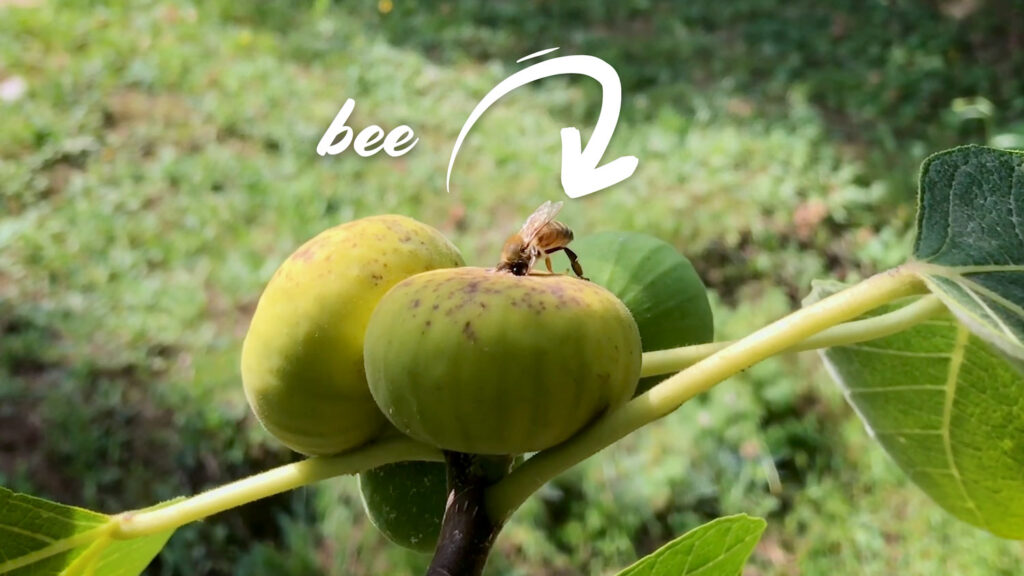
A female wasp will crawl into the tiny hole in the fig called the ostiole and in the process, lose her wings. Once the tiny interior inflorescence flowers are pollinated by the fig wasp, seeds develop on the inside of the syconium which become miniature fruits, real fruits in the botanical sense.
Types of Figs
For those of you who are a little queasy about eating dead wasps and eggs, there’s some good news! There are 4 types of figs—Caprifigs, Smyrna, San Pedro, and Common.
Common Figs
Home gardeners typically plant the Common type and that’s the type that develops without wasp intervention.
You’ll know a variety is a Common type if it’s labeled self-pollinated, though that’s technically incorrect—there is actually no pollination happening at all in a Common fig. And that’s fine, because we are mainly eating the fleshy outer pod, the syconium, not the real botanical fruit on the inside.
Now that we’ve gotten that crazy botany lesson out of the way, let’s talk about fig tree varieties!
Fig Tree Varieties
Common Fig Varieties
Some popular common fig varieties include Mission, Kadota, Olympian, Texas Everbearing, and Celeste.
Cold Hardy Fig Trees
If you’re looking for cold hardy varieties, check out Chicago Hardy, Desert King or Brown Turkey which all grow down to zone 5 when planted outdoors and zone 2 when planted indoors.
Small Fig Trees (Great for Containers Too!)
If you’re like me, and you don’t have a ton of extra space and you want a small fig tree for your garden or patio, check out the Little Miss Figgy variety, which grows 3-4 feet wide, and the Fignomenal fig which is only 28” high.
Myself, I’m gonna be planting the Little Ruby Fig variety from Stark Bro’s, which grows only 4-6’ feet wide. This is the variety I already have in my garden and it’s doing great.
Fig Varieties For Sale
Looking for some other options? Here’s a full list of fig varieties. Let us know if one of your favorites isn’t here!
| Variety | U.S. Zone (Outdoors)** | Fruit Color | Size (Unpruned)* |
|---|---|---|---|
| Beer’s Black Fig | 7-10 | Violet | 10-20′ wide/high |
| Black Jack Fig | 8-10 | Purple | 12-15′ high |
| Black Mission Fig | 7-10 | Purple-black | 15-30′ high |
| Brown Turkey Fig | 5-9 | Red-brown | 10-20′ wide/high |
| Celeste Fig | 6-9 | Violet-rose | 7-10′ wide/high |
| Champagne Fig | 7-10 | Yellow | 10′ high |
| Chicago Hardy Fig | 5-10 | Purple | 30′ high |
| Conadria Fig | 8-10 | Green (“white”) | 12-20′ high |
| Desert King Fig | 5-9 | Green (“white”) | 10-15′ high |
| Dwarf Fig | 7-10 | Brown | 8-10′ high |
| Excel Fig | 8-11 | Yellow-green | 15-20′ high |
| Fantasia Fig | 7-9 | Black | Up to 25′ high |
| Fignomenal Fig | 6-11 | Brown | 28-30″ high |
| Hunt Fig | 7-10 | Violet-brown | 15-20′ high |
| Improved Brown Turkey Fig | 7-9 | Brown | 15-25′ high |
| Italian Honey Fig | 7-10 | Yellow | 8-10′ wide/high |
| Kadota Fig | 7-9 | Green (“white”) | 15-25′ wide/high |
| Lattarula Fig | 7-11 | Yellow | 8′ high |
| Letizia Fig | 6-9 | Brown | 12-15′ high |
| Little Miss Figgy Fig | 7-10 | Purple | 4-6′ high/3-4′ wide |
| Little Ruby Fig | 7-10 | Yellow-green | 4-6′ wide/high |
| Lola Martin Fig | 6-9 | Purple-rose | 10-30′ high/10′ wide |
| LSU Gold Fig | 7-10 | Yellow | 8-10′ high/wide |
| LSU Purple Fig | 7-10 | Purple | 8-10′ high/wide |
| Olympian Fig | 6-10 | Purple | 8-12′ high/8-10′ wide |
| Osbourne Prolific Fig | 7-9 | Brown-green | 20-30′ high |
| Panache Tiger Fig | 8-10 | Yellow/green stripes | 10-18′ high |
| Peter’s Honey Fig | 7-10 | Yellow-green | 12-20′ high |
| Texas Everbearing Fig | 7-10 | Purple | 10-15′ wide/high |
| Violette de Bordeaux Fig | 7-9 | Purple-black | 6-10′ high |
| White Marseilles Fig | 7-9 | Yellow-green | 10-15′ high/10′ wide |
Best Place To Plant A Fig
Fig Tree Sun Requirements
Like almost practically every other fruit tree, figs need full sun to thrive. That’s a minimum 8 hours daily of direct sunlight during the growing season.
This is especially true if you’re in a colder area. In the winter, you’ll want to pick a spot that gets direct sunlight in the early morning and again late in the day. This will help prevent winter injury.
During the growing season, morning sun exposure is also important because it dries dew from the trees, which reduces the risk of disease.
Fig Trees & Wind Exposure
If you have a sheltered area like the fence I planted mine against, or even better a masonry wall that will radiate warmth, that will help protect your fig even more.
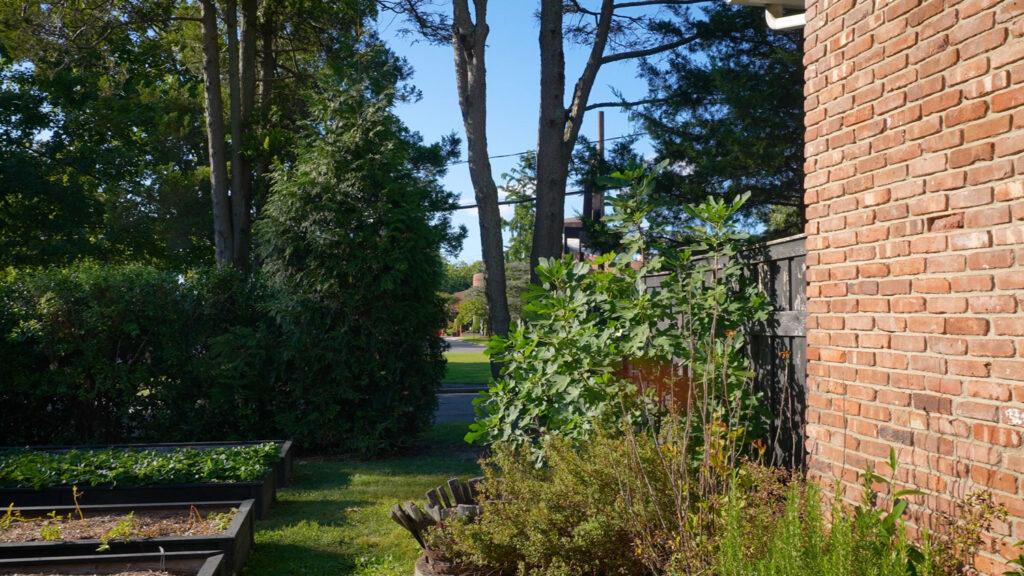
Figs, Orchards & Disease
Speaking of disease, if you can, plant your fig away from old garden sites, other fruit trees, and orchards. Figs are prone to root-knot nematode which is common in those areas.
Are Fig Tree Roots Invasive?
Fig roots can spread quite far. The word “vigorous” was made for fig roots! While they won’t damage concrete foundations or steel pipes, avoid planting figs over septic drain fields or clay sewer pipes.
Fig Trees & Grass
You’ll also want to avoid locating them near plants and shrubs that are highly competitive and fast-growing—this includes grass! If you do plant them in your lawn, just make sure to clear out an area 2-3’ in diameter around your fig the first few years.

Companion Plants for Fig Trees
I planted strawberries under my first fig last year and everyone produced fruit. I also fertilized, so that was probably a factor.
If you guys have successfully interplanted figs with another edible, let us know your successful combo in the comments—I am definitely on board with the strawberry-fig combo though!
Fig Plant Drainage & Compost
Now that we’ve picked the spot, let’s talk about soil.
Amending Fig Tree Beds With Compost
Figs like well-drained soil, not too heavy, not too light. Heavy soil like clay prevents drainage. Sandy, light soil allows too much water to pass through and harbors root-knot nematodes to boot. So if your soil is either of these, you’ll want to add organic matter to improve the drainage. Heck, even if your soil has great drainage, you can always use more compost!
It’s like cheese. Everything’s better with more cheese.
If you’re not ready to plant yet, you can add uncomposted matter like vegetable scraps, straw, mulch, bark, fresh animal manure, leaves, wood chips or crop residue to the existing soil. You can wait 6-18 months for that to decompose.
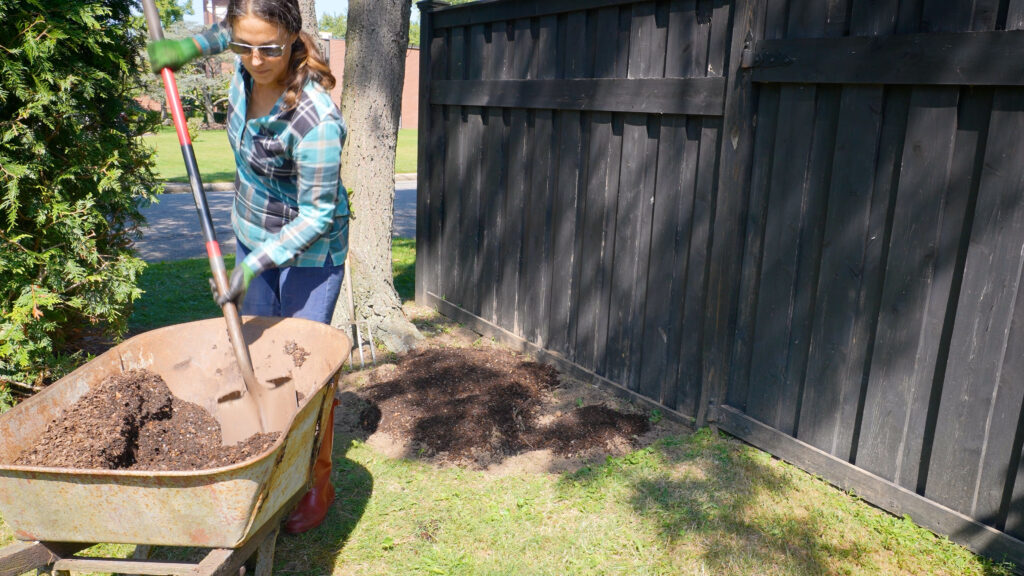
If you’re planting now, add already fully composted material. I try to keep my compost bin full and ready to go, but you can also purchase compost from local nurseries or farms, or use one of my quick tricks, a bag of potting mix.
Fig Tree Soil pH
Once your soil is draining right, we’ll want to nail down the sol pH.
Figs can tolerate a pH of 5.5 to 8.0, but they’ll do best when it’s slightly acidic, between 6.0 and 6.5. While you can send it off to be tested, one of the easiest ways to figure out your soil pH is to use a soil testing kit. I’ve used liquid tests in the past, but I’m currently in love with my new digital meter.
For perennials like figs, it’s easiest to get the soil right before you plant, so if your pH is outside this range, it’s time to amend.
Fig Soil Amendments
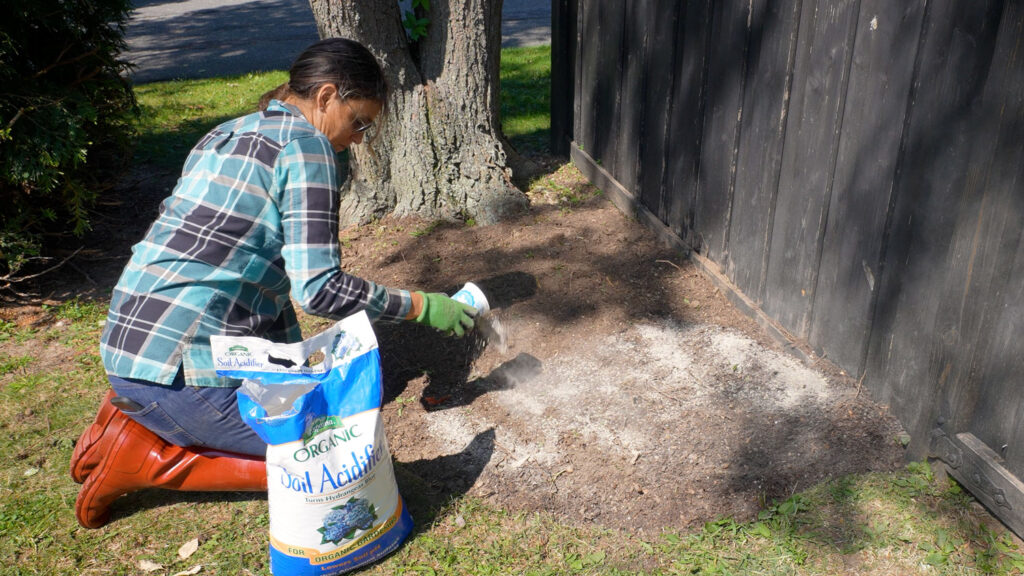
If your soil pH was below the 6.0-6.5 range, add dolomitic limestone or dolomitic lime. This is slightly different from regular lime, since it has a magnesium boost. You’ll want to spread this in a 6×6 foot area around and including the planting area, and then work it into the soil at least 8 inches deep.
If your soil pH was above the 6.0-6.5 range, you’ll want to add either elemental sulfur or aluminum sulfate. These are sometimes marketed as soil acidifiers. These can take a while to act, from 3-12 months, so plan ahead.
You can purchase any of these at a local nursery or online. Application amounts will be different depending on the brand, how much you need to change your pH and how big your area is, so just follow the directions on the package.
Fertilizing Figs
One thing you do not want to apply when you plant is fertilizer. It can burn the roots and make the tree focus on leaf growth when you want to focus on root growth. Once the fig is established, after a year, you can start fertilizing 1-3 times per year.
When to Plant Figs
The best time to plant your fig is going to depend on what form it is and your climate.
Bareroot dormant figs (with no leaves) are best planted in the fall, early winter, or early spring, basically, when the plant would normally be dormant anyways.
If you’re planting a hardened off potted plant like I am, it’s best to plant in temperatures above 50ºF (10ºC).
Warmer areas will want to do fall or winter planting and colder areas will want to do spring planting.
Prime time for both potted and bareroot planting is mid-spring, after the danger of hard frost has passed. Cloudy days are best since that taxes the plant less.
Fig Tree Spacing
In-Ground Plant Spacing
If you research plant spacing for figs, you are going to find some wildly different numbers. The reason why is because there are so many varieties, all different sizes, and there’s multiple shapes to prune them in, which also affects the spacing.
My advice is, don’t get hung up on the pruning style yet, because that is a whole ‘nother complicated post (and let me know in the comments if you guys want me to make that because I need to prune mine this winter!).
The easiest and best way to figure out the spacing is to check the variety’s width and then plan for that. My variety, the Little Ruby Fig, grows 4-6’ wide, so I figured 2-3’ on all sides.
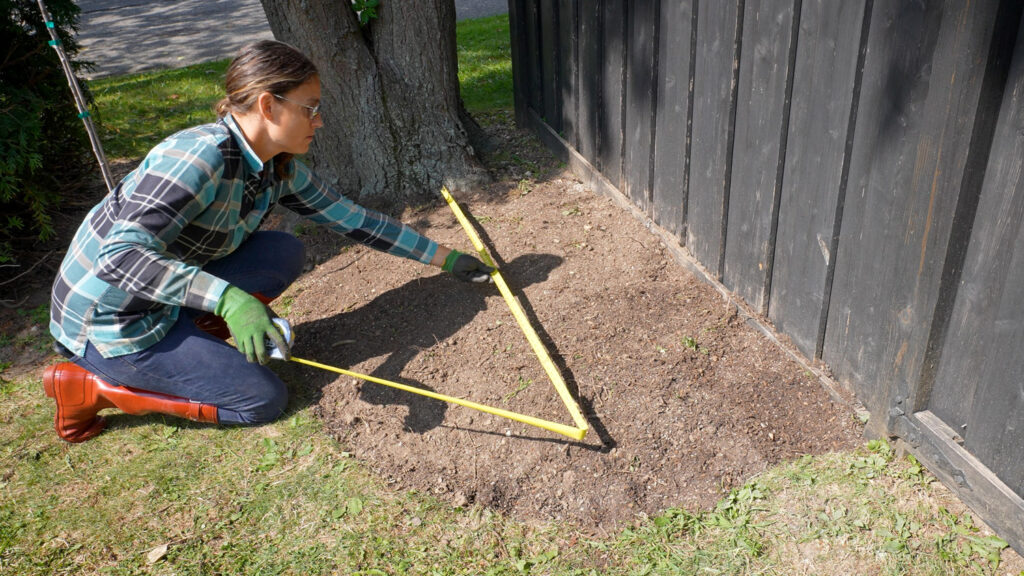
My first fig looked pretty lonely when I planted it, but now I’m pruning the backside to keep it off the fence. I’m really happy with how my original fig tree was spaced and I’m gonna be spacing my new one the same way.
Fig Espalier
Another option if your garden is super tiny is to espalier your figs, which is to grow them flat, on a trellis or wall. While I’m not doing that with these figs, I will be doing that with some pears soon. The process is similar, so stay-tuned for that if espalier is how you want to go.
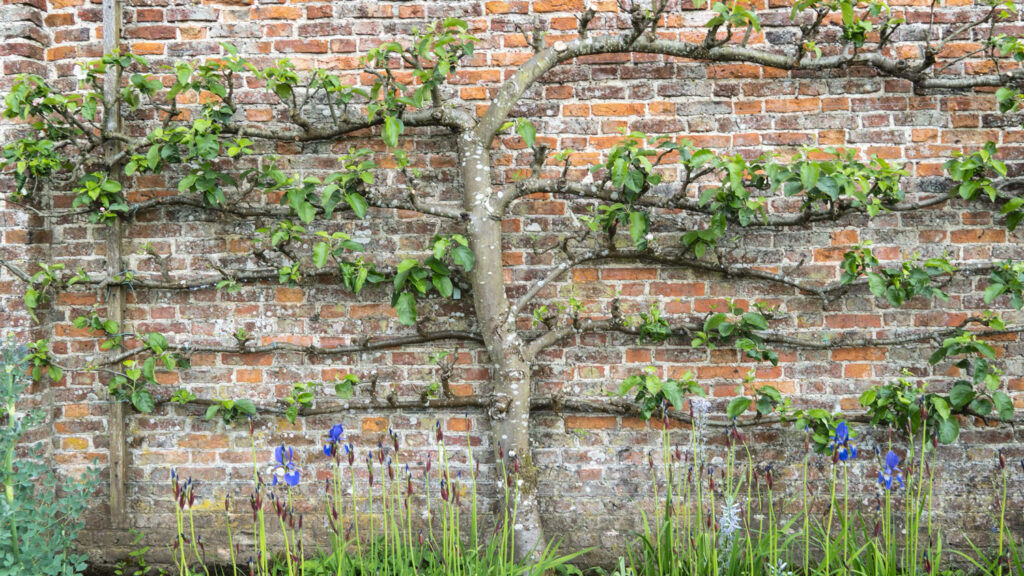
How to Plant a Fig
How you plant is going to depend on how you bought your fig.
1. Harden off your fig
If your fig is potted in soil, harden it off before planting by gradually moving it to a sunnier location.
2. Soak the Roots & Trim the Top
If your fig is bareroot, soak roots for an hour or two before planting. You’ll also want to cut off the top ⅓ of the plant unless the nursery already did that.
3. Plant Fig To Depth
Spread the roots in the planting hole. If it came potted like mine, and not bareroot, you’ll want it about 4 inches deeper than it was planted in the container. Cover the roots and pat the soil down.
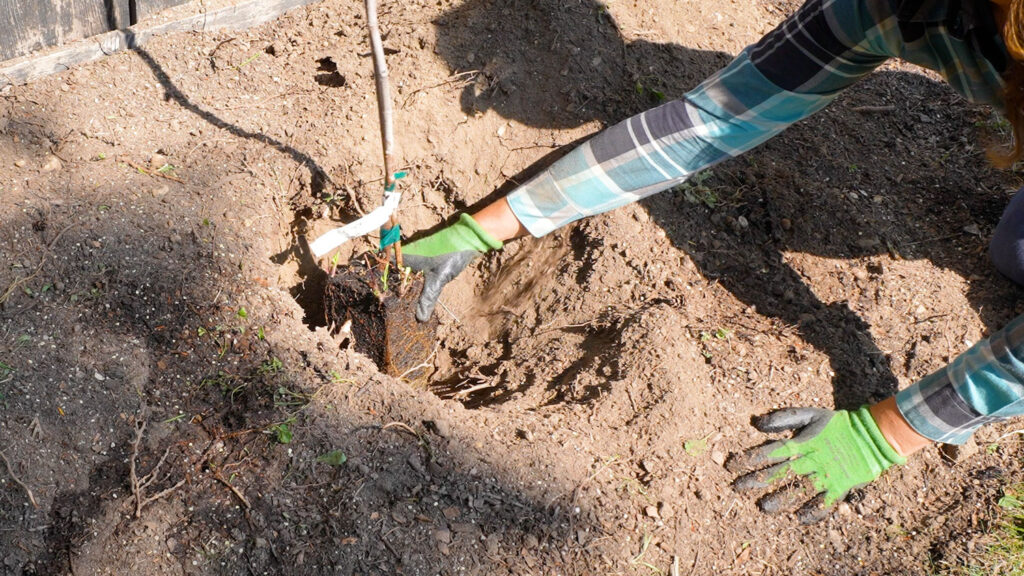
Fig Tree Watering
Once your fig is in the ground, water it well to settle soil around the roots.
Figs need 1-1.5” water per week, either from rain or irrigation, during the growing season. If it’s hot, or there’s competing plants nearby like grass, you’ll need more.
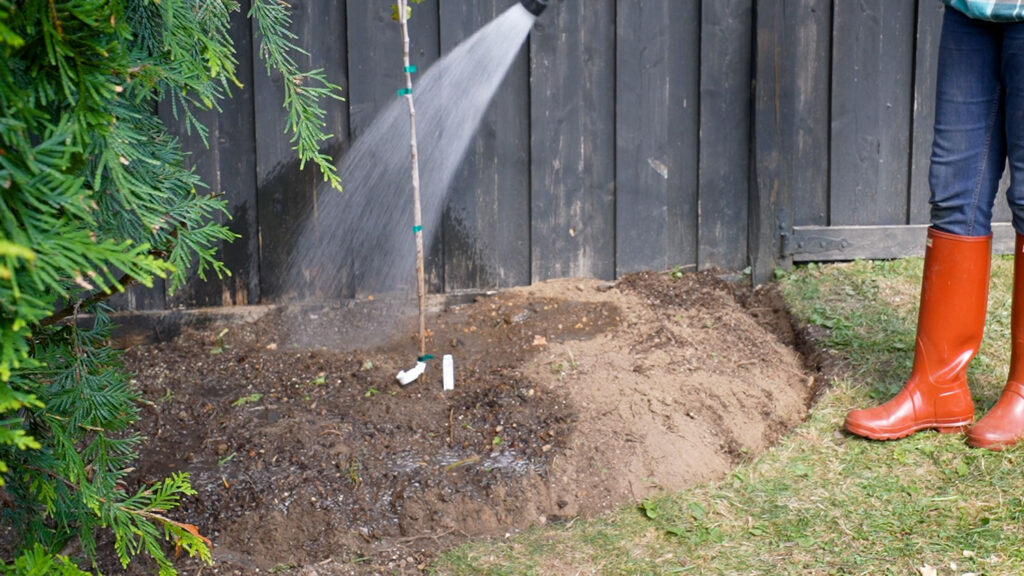
You can track how much water your garden is getting with an old school rain gauge. And it’s always good to know too, just in general, how much rain your region gets. Where I live, I get about 3.5-4” of rain per month during the growing season, so I know for the most part the rain will take care of everything, but I’ll need to supplement here and there during the dry spells. My rule is, if it hasn’t rained all week, I need to pull out the hose.
Good news is that once established, the huge root systems of mature figs make them quite tolerant to drought, so they’re pretty low maintenance long-term.
Mulching
The last step for planting is to apply a good mulch. Mulching prevents additional moisture loss and it has the added benefit of reducing the effects of root-knot nematodes.
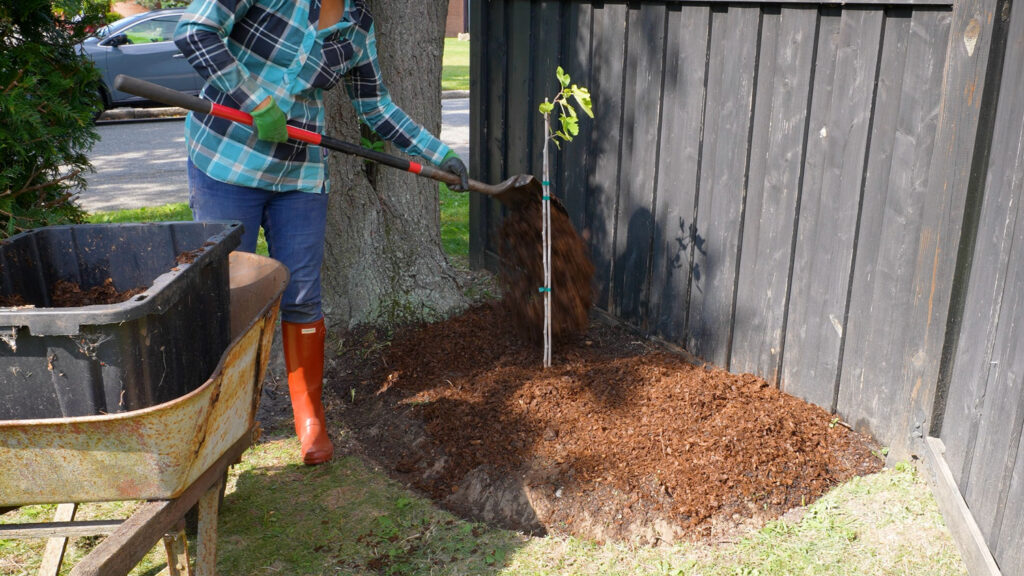
Best Type of Mulch for Fruit Trees
Mulch with whatever coarse organic matter you have on hand. Some of my favorite mulching materials are wood chips, coarse compost, and shredded leaves. Just avoid plastic and bagged mulch with artificial colors or chemicals.
We’ve covered just about everything you need to know to get your fig trees off to an amazing start! Stay-tuned for more info on these awesome fruit trees, and let me know in the comments what other videos you’d like to see on figs.
Sources
- Planting Fig Trees, Stark Bro’s.
- Fig Wasps, US Forest Service.
- Down Home Harvest Little Miss Figgy, Southern Living Plant Collection.
- Figs in the Home Garden, Pennsylvania State University.
- Growing Figs in Maryland, University of Maryland Extension.
- Figs, Texas A&M University
- Fig Production, Alabama A&M & Auburn University Extension
- Fig Culture in Northern Climates, Cornell University.
- Reducing Soil pH, Wisconsin Horticulture.
- Lowering Soil pH With Sulfur, University of Michigan Extension.
- Lowering Soil pH, University of Wisconsin
- Ficus Curica, Brown Turkey, NC State Extension
- Home Garden Figs, University of Georgia.
- Fig, Clemson Cooperative Extension.
- Common Fig, Ficus Carica, University of Tennessee


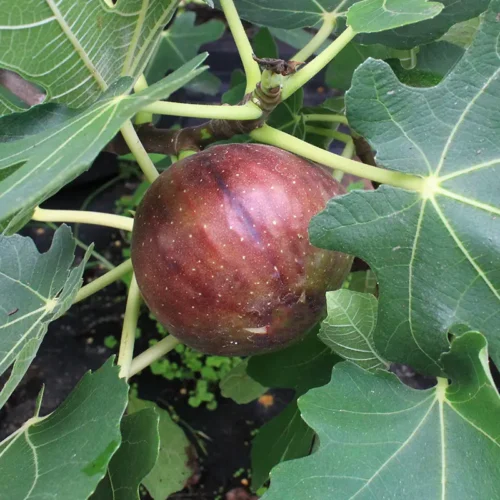
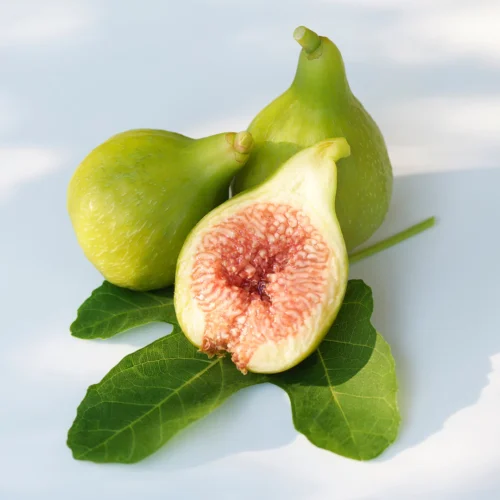
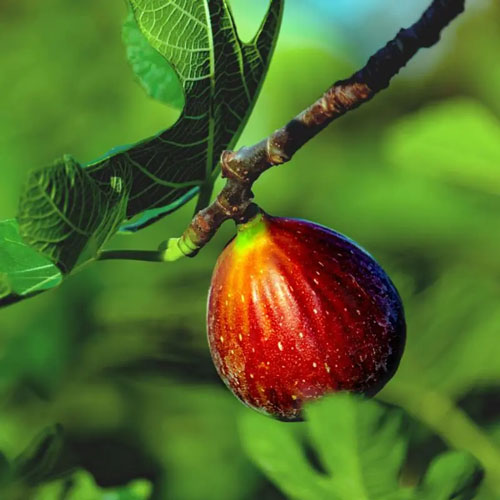
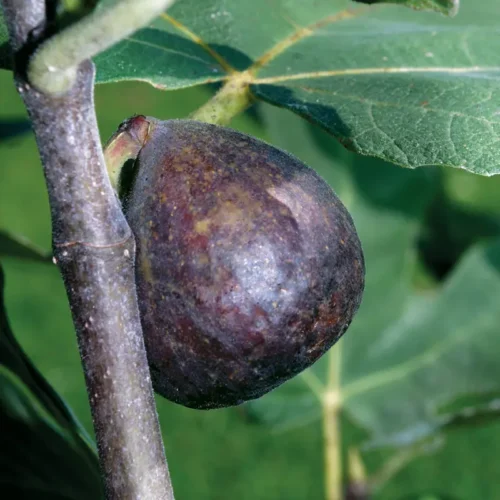
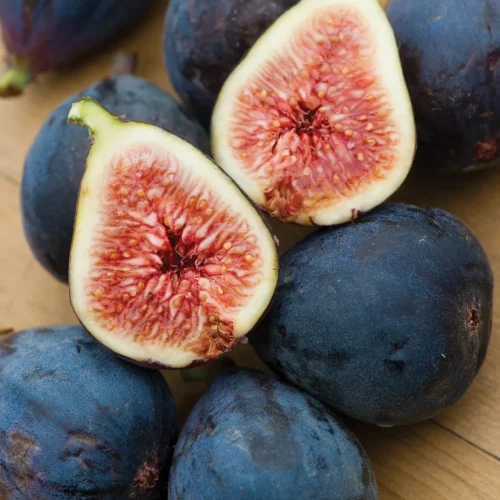
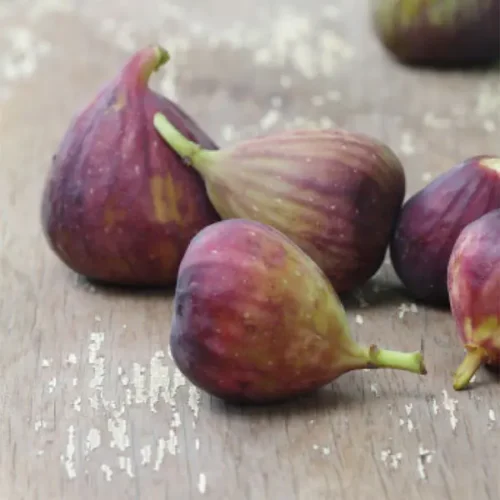
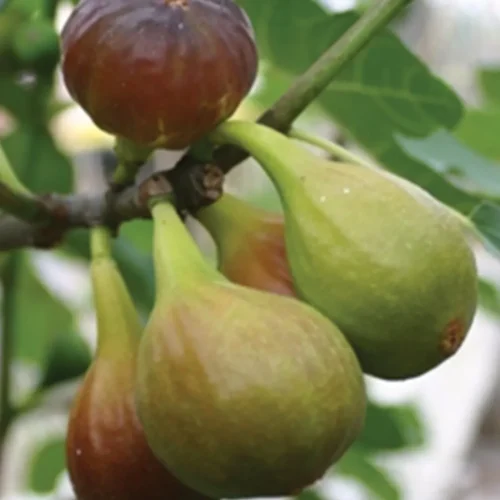

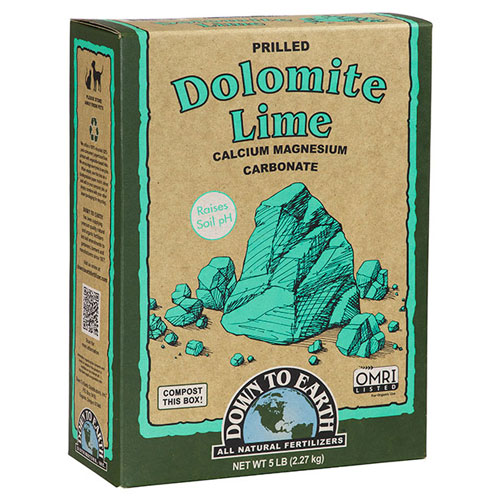
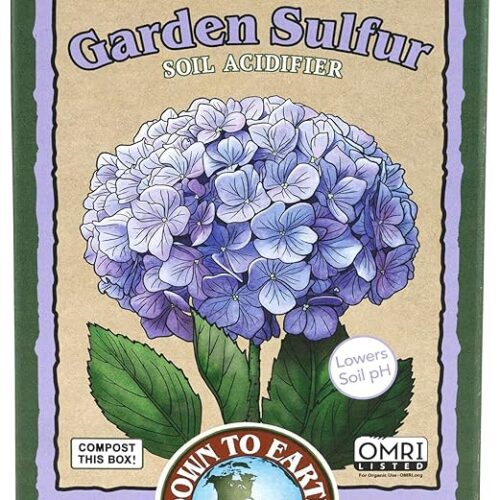
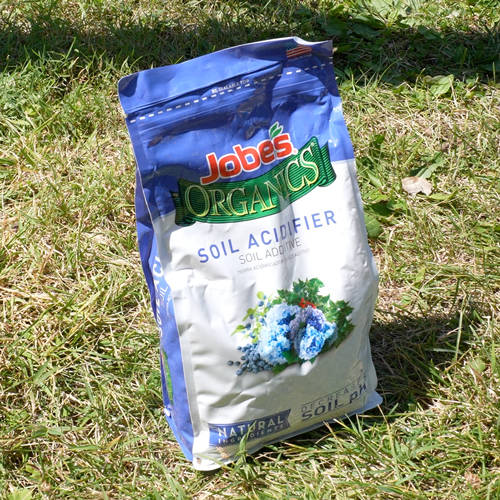
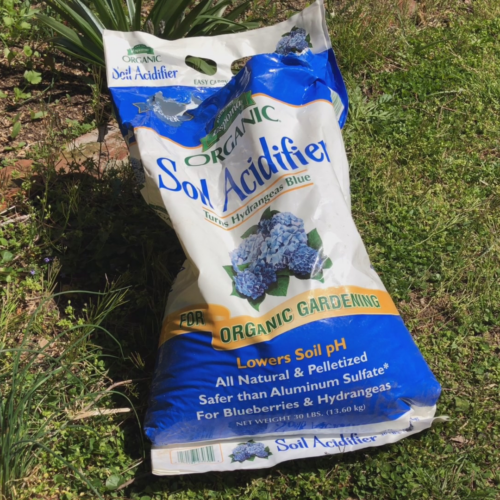
Leave a Reply